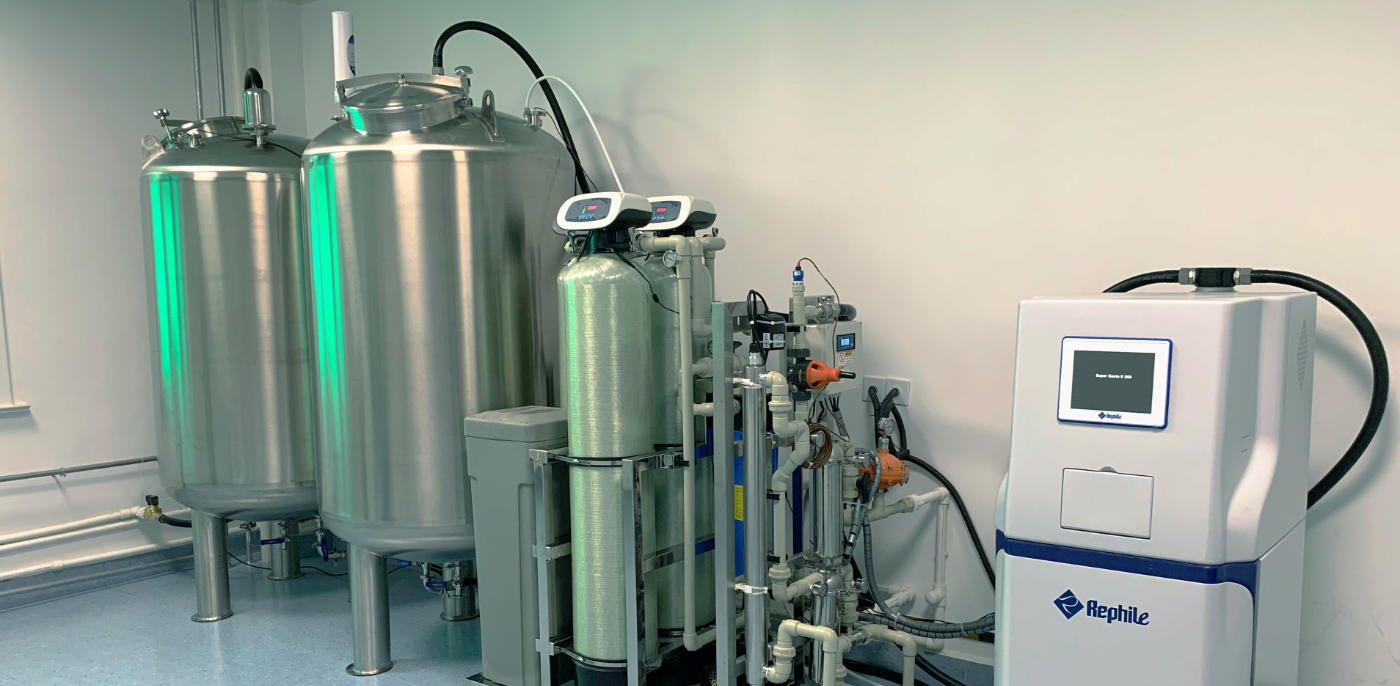
Expansion Vessels
Expansion Vessel Flushing
-
Legionella Risk
-
Expansion Vessel Flushing - Legionella Risk -
What is an expansion vessel?
An expansion vessel, or tank, is a pressurised container that normally incorporates a replaceable bladder or fixed diaphragm in its design. It is installed in heating, cooling, boosted water, and solar heating systems. They can also be referred to as pressure vessels and hydraulic accumulators and can be found in many commercial and industrial building
There are two options available to reduce water stagnation within the vessels, these are flow through valves or flow through vessels.
A flow through valve works by circulating a portion of the flow back into the vessel when there is demand on the system and the vessel is depleted of water. The internal design of the vessel encourages circulation within it, to prevent water stagnation, so, it is also advisable to install a specially designed vessel which aids correct circulation when fitting these valves. Flow through vessels are designed in a similar way to potable vessels and they allow a larger proportion of water through. But they have a higher cost because of the additional construction
Expansion vessels and the risks from Legionella
Health and Safety Executive (HSE) guidance, HSG274 Part2: 2014, has identified expansion tanks as a potential legionella risk due to low water flows or stagnation issues in hot and cold-water systems.
Furthermore Under HSE (HSG274 Part 2), if you operate a business you have a legal responsibility to identify potential risks in the workplace and minimise risks to protect staff and the public
It is your legal obligation to be aware of the potential risks from Legionella bacteria and other waterborne pathogens and to take the necessary precautions to reduce the risk if you have a water system in the UK that includes an expansion vessel. Typically, the initial stage in this procedure is to engage in a legionella risk assessment.
Why does Legionella grow inside expansion vessels?
The following circumstances are frequently present in an expansion vessel and will promote Legionella growth:
Stagnation and poor flow
Nutrients such as scale, rust and sediment
Temperatures that encourage Legionella growth, between 20 and 50°C
How to reduce the risk from Legionella in expansion vessels?
There are a few steps you can take to reduce the danger of Legionella growth inside your expansion vessel, regardless of whether you currently have one or are planning to install one.
Expansion containers should be positioned on cold-flowing pipes in cool locations as near to the incoming water supply as practicable. To reduce the chance of debris getting trapped, they should be mounted vertically on the piping and equipped with an isolation valve and a drain valve to make cleansing and sampling easier. According to the manufacturer's instructions or as recommended by a risk assessment, the bladders should be changed, the vessels should be flushed through and purged, and the vessels should be changed. Additionally, nitrogen should be utilised to top off the pressure rather than air because it increases lifetime and enters the membrane more slowly than oxygen. Since nitrogen is a dry inert gas, it won't cause corrosion from the inside out.
What is included in an expansion vessel flushing service?
Isolation
Sample upon request
Record Keeping
Expansion Vessel
FAQs
-
In accordance with the Health and Safety at Work Act of 1974 and the Approved Code of Practice (ACoP L8, HSG 274), duty holders, such as employers and those in charge of a facility, are responsible for ensuring the health and safety of any individuals who may be impacted by their undertaking, including any risk of legionella.
A rubber diaphragm on expansion vessels serves as a source of nutrients for legionella. Due to the expansion vessel's inherent ability to produce a dead end, they are also fitted on pipe lengths that prevent water from flowing. The two together provide legionella with the perfect environment for growth. Because of this, you must make sure that your expansion vessel and the connected pipes are periodically cleansed.
-
Expansion vessel flushing should be undertaken six monthly in accordance with the legionella guidelines, HSG 274,
-
On hot and cold water household systems, each expansion vessel needs to be flushed. However, as they are a component of a closed system, expansion vessels on heating systems do not. A closed system is one in which the water content is contained. For instance, hot and cold water residential systems provide for exposure to the water because it leaves through taps, showers, and baths. The risk and exposure to legionnaires disease are lower with heating systems since water normally does not leave the systems through radiators or pipework.
-
Everything starts with a thought. You might wish to start a business. You might desire to develop your pastime into something greater. Or perhaps you want to share a creative project with the world. Regardless of what it is, how you convey your story online can have a huge impact.
-
All of our engineers are fully qualified with City & Guilds training, they also hold certification in the water advisory regulations scheme, Pwtag ( The pool water treatment advisory group) and unvented systems, and can help assist you in meeting compliance today for HSE (ACoP L8), and provide landlords with guidance for hot and cold water low risk systems. so you can rest assured that you are working with a trusted water hygiene service provider who put health and safety first.
All our engineers are enhanced DBS Checked to ensure suitable people are entering your premises and to safeguard vulnerable people. We are committed to maintaining the highest standards within our industry.

